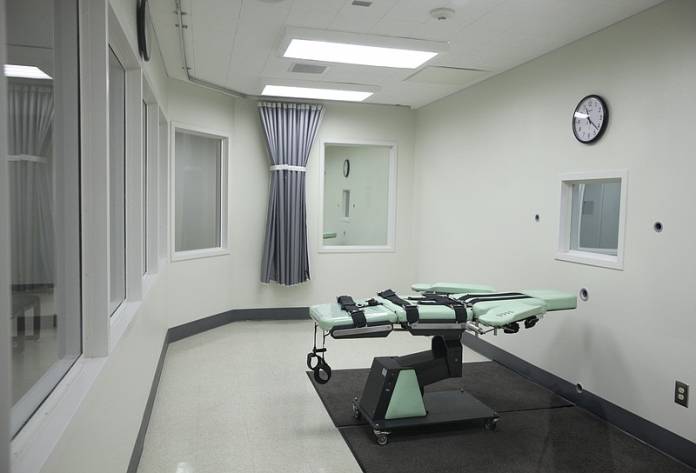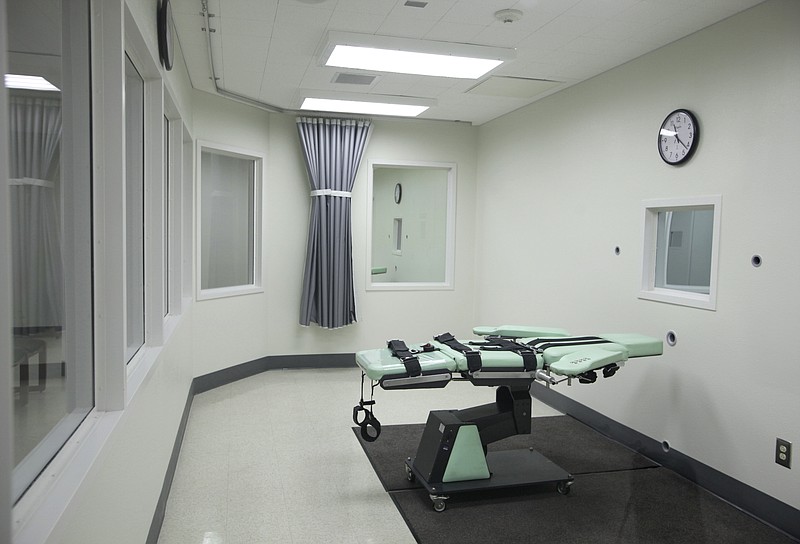
Attorneys for 48hills, the Los Angeles Times, and KQED filed suit in federal court today to demand that the entire process of the state’s future implementation of the death penalty be open to the news media.
The suit seeks to shed light on a process that would, under current regulations, take place in part behind closed doors. The press, as a surrogate for the public, has the right to see every stage of an execution, the suit argues.

California’s last execution was in 2006, and the state has been scrambling to find a new protocol for lethal injections. The last protocol involved three drugs, which have become increasingly difficult to find. The new rules, adopted March 1, call for the warden at San Quentin, which hosts the death chamber, to choose one of two drugs, thiopental or pentobarbital; a dose sufficient to kill the prisoner is set to be administered by prison technicians.
There’s a problem with the plan: Thiopental is not sold in the US, and by law can’t be imported into the country, the lawsuit states. FDA approved manufacturers of pentobarbital won’t sell it for use in executions.
The rules state that three hours before an execution, a team of prison officials are supposed to meet behind closed doors in the “Infusion Room” next to the execution chamber and prepare three doses of the lethal injection (nine syringes for pentobarbital, 15 for thiopental).
Under the protocol, there is no way for the public to know which chemical is being used, where it came from—or even if that actual chemical is in the syringes.
In the past, the California Department of Corrections and Rehabilitation has sought to buy execution drugs from Pakistan because no US company would sell them.
The condemned inmate is to be strapped into a gurney in a room with a window, where witnesses can observe the execution. A technician will stick a needle in his vein, and connect it to a tube that leads to the Infusion Room. But there are not witnesses allowed in the Infusion Room.
Help us save local journalism!
Every tax-deductible donation helps us grow to cover the issues that mean the most to our community. Become a 48 Hills Hero and support the only daily progressive news source in the Bay Area.
The executioners are instructed to deliver, from the secret chamber, one dose of the deadly chemical. If the prisoner is still alive, they can deliver two more doses.
If three doses still don’t kill the prisoner, the warden is supposed to “stop the execution” and “summon medical assistance” for the inmate. At that point, though, the curtains in the execution chamber will be closed – so nobody will know what “medical assistance” is rendered.
In other words: Key parts of this process will happen without any public oversight.
That means we will never know if the prisoner is subjected to terrible pain and suffering because of improperly prepared or black-market drugs.
We will never know if an inmate who survived three doses of the chemicals actually gets medical assistance from a trained clinician, or if he is left to die in pain.
An execution represents about the most expansive power that the state can wield – and the idea that critical parts of that process are going to be hidden from public view is offensive, and scary.
The complaint seeks an injunction preventing the CDCR from carrying out an execution without full access for the press to every step of the process. We will keep you posted as this moves forward.
The San Francisco Progressive Media Center, which publishes 48hills, is represented by Alan Schlosser and Linda Lye at the ACLU and Ajay Krishnan at Keker, Van Nest, and Peters.
Thomas Burke at David, Wright Tremaine represents KQED and the LA Times.

